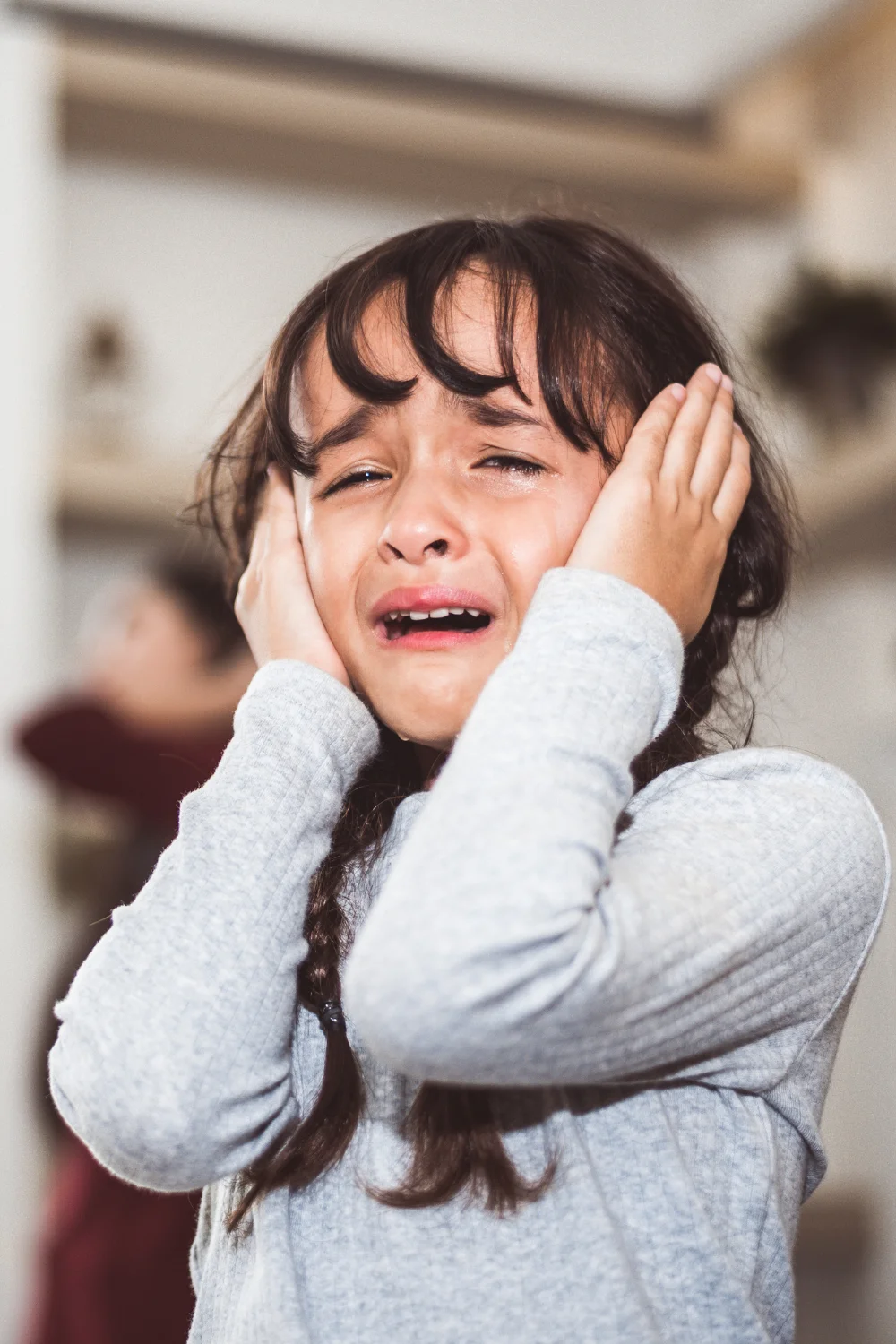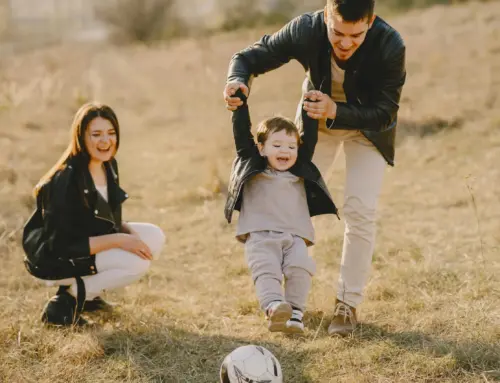Your childhood doesn’t have to control your adult life.
Millions of adults carry invisible wounds from adverse childhood experiences (ACEs) that happened before age 18. These traumatic events — from abuse and neglect to household dysfunction — affect many people. You might think you’ve moved past what happened years ago. But those early experiences often show up in unexpected ways today.
Maybe you struggle with relationships, anxiety, or turning to substances when life gets tough. Perhaps you feel stuck in patterns you can’t explain. Here’s what you need to know: adverse childhood experiences (ACEs) leave real marks on your brain and body that can last for decades. The good news? Healing is absolutely possible.
Understanding how childhood trauma affects you is the first powerful step toward breaking free and building the life you deserve.
Related: Is It Dry Drunk Syndrome or Normal Recovery? How to Tell
What Are Adverse Childhood Experiences
Adverse childhood experiences (ACEs) are traumatic events that happen before age 18. These experiences create stress that can harm a child’s developing brain and body. According to the Centers for Disease Control and Prevention, ACEs fall into three main categories that researchers continue to study today.
The first category includes abuse — physical, emotional, or sexual harm directed at a child. The second category covers neglect, which means not getting basic needs met like food, shelter, medical care, or emotional support. The third category involves household dysfunction, including domestic violence, substance abuse, mental illness, or having a family member in prison.
Common Examples of ACEs
Physical abuse includes hitting, kicking, or other forms of violence against a child. Emotional abuse involves name-calling, threats, or making a child feel worthless. Sexual abuse covers any unwanted sexual contact or exposure to children.
Neglect happens when caregivers fail to provide basic needs. This might mean not having enough food, clean clothes, or medical care when sick. Emotional neglect occurs when children don’t receive love, support, or attention they need to thrive.
Household dysfunction creates unstable home environments. This includes witnessing domestic violence, living with someone who abuses alcohol or drugs, or having a parent with untreated mental illness. Divorce, abandonment, or having an incarcerated family member also count as ACEs.
The Impact of ACEs on Development
Children’s brains and bodies are still growing. Trauma during these important years changes how kids develop physically and emotionally. Chronic stress from ACEs can slow normal growth and learning.
Young brains exposed to ongoing trauma may develop differently than those in safe environments. The stress response system becomes overactive, making it hard for children to feel calm and secure. This affects their ability to focus, learn, and form healthy relationships.
ACEs also impact physical development. Children may experience more illnesses, sleep problems, or developmental delays. The body’s stress systems work overtime, which can weaken the immune system and affect overall health.
The Long-Term Effects of ACEs

The Centers for Disease Control and Prevention shows that adverse childhood experiences (ACEs) create ripple effects that can last throughout adulthood. The impact of ACEs on mental health becomes clear when we look at how childhood trauma affects people years later.
Adults with multiple ACEs face higher risks for various health and social problems. These effects touch every aspect of life, from physical health to relationships and career success. Understanding these connections helps explain why some adults struggle with issues that seem unrelated to their childhood.
Emotional Consequences like Anxiety and Depression
People with ACEs often develop anxiety disorders that make daily life challenging. This anxiety might show up as constant worry, panic attacks, or fear of social situations. The brain learned early to stay alert for danger, making it hard to relax even in safe environments.
Depression frequently develops in adults who experienced childhood trauma. Feelings of sadness, hopelessness, or emptiness may seem to come from nowhere. Low self-worth often stems from negative messages received during childhood. Many survivors blame themselves for things that weren’t their fault.
Post-traumatic stress can develop even years after traumatic events ended. Flashbacks, nightmares, or intense reactions to reminders of trauma are common. The nervous system remains on high alert, making it difficult to feel truly safe.
Physical Health Issues Linked to ACEs
The CDC ACE Study found strong connections between childhood trauma and adult health problems. People with four or more ACEs have significantly higher rates of heart disease, diabetes, and stroke. Chronic inflammation from ongoing stress contributes to these conditions.
Autoimmune disorders occur more frequently in ACE survivors. The immune system, stressed from years of trauma responses, may begin attacking healthy tissue. Conditions like fibromyalgia, chronic fatigue, and arthritis are more common in this population.
Sleep disorders affect many adults with ACEs. Difficulty falling asleep, staying asleep, or feeling rested can persist for decades. The hypervigilant state created by childhood trauma makes deep, restorative sleep challenging.
Behavioral Problems in Adolescence and Adulthood
Substance abuse rates are much higher among people with ACEs. Alcohol, drugs, or other substances may temporarily numb emotional pain or help people feel normal. What starts as self-medication can quickly become addiction.
Risky behaviors often emerge during adolescence and continue into adulthood. This might include reckless driving, unsafe sexual practices, or self-harm. These behaviors may represent attempts to feel something when emotions are numb or to gain control over overwhelming feelings.
ACEs and adult relationships suffer when people haven’t healed from childhood wounds. Trust issues make it hard to form close bonds. Some survivors become isolated, while others may stay in unhealthy relationships that feel familiar.
Recognizing the Signs of ACEs in Children
Early identification of trauma symptoms can help children get support before problems become more serious. Adults who interact with children need to understand what trauma looks like at different ages.
Children often can’t express their feelings in words. Instead, they show distress through changes in behavior, sleep patterns, or physical symptoms. Recognizing these signs helps caring adults respond with appropriate support.
Symptoms of Trauma in Young Children
Very young children may regress to earlier developmental stages. A potty-trained child might start having accidents, or a child who slept through the night may wake up frequently. These changes often signal emotional distress.
Sleep problems are common in traumatized children. Nightmares, fear of sleeping alone, or difficulty falling asleep may develop. Some children become afraid of the dark or need excessive reassurance at bedtime.
Physical complaints without clear medical causes may indicate trauma:
- Headaches that come and go
- Stomachaches before school or activities
- Unexplained aches and pains
- Changes in appetite or eating habits
Young children often feel emotions in their bodies, making physical symptoms important warning signs.
Warning Signs in Adolescents
Teenagers may withdraw from family and friends when dealing with trauma. Previously social teens might isolate themselves or stop participating in activities they once enjoyed. This withdrawal often represents an attempt to protect themselves from further hurt.
Mood swings beyond typical teenage behavior may signal trauma. Extreme anger, sadness, or emotional numbness can indicate deeper issues. Self-harm behaviors like cutting or burning may develop as ways to cope with overwhelming emotions.
Risk-taking behaviors often increase in traumatized teens. This might include substance use, dangerous driving, or sexual activity. These behaviors may represent attempts to feel in control or to numb emotional pain.
Behavioral Changes and Academic Struggles
Childhood trauma effects frequently show up in school settings. Difficulty concentrating, declining grades, or problems with memory can all stem from trauma. The stressed brain has trouble focusing on learning when it’s busy watching for danger.
Acting out behaviors may increase in traumatized children. Fighting, defiance, or aggression might develop as ways to express feelings they can’t put into words. Some children become the class clown to deflect attention from their pain.
Social problems often emerge when children are dealing with trauma. Making friends becomes harder when trust feels dangerous. Some children become people-pleasers, while others push people away to avoid being hurt.
The Science Behind ACEs and Trauma

Scientific research has transformed our understanding of how childhood experiences shape adult health and behavior. The landmark ACE study revealed clear connections between early trauma and later problems.
Modern neuroscience explains how trauma actually changes the developing brain. These findings help remove shame and blame while pointing toward effective healing approaches.
Understanding the ACE Study and Its Findings
The original ACE study was conducted by the Centers for Disease Control and Prevention and Kaiser Permanente. They surveyed over 17,000 adults about their childhood experiences and current health. The study found that ACEs are much more common than previously thought.
Two-thirds of participants reported at least one ACE, and one in four had three or more. The study revealed a dose-response relationship between ACEs and health problems. People with more ACEs faced higher risks for numerous issues including depression, substance abuse, suicide attempts, and chronic diseases.
These findings changed how medical and mental health professionals understand the roots of many adult problems. Instead of asking “What’s wrong with you?” practitioners began asking “What happened to you?” This shift opened doors to more effective, trauma-informed treatment approaches.
The Neuroscience of Childhood Trauma
Brain imaging technology shows how trauma actually changes brain structure and function. The developing brain adapts to threatening environments by prioritizing survival over learning and growth. These adaptations make sense in dangerous situations but can cause problems in safe environments.
Chronic stress floods the developing brain with stress hormones like cortisol. Over time, this can damage areas responsible for memory, learning, and emotional regulation. The amygdala, which detects threats, becomes hyperactive while the prefrontal cortex, which manages reasoning, may be underdeveloped.
These changes aren’t permanent. The brain retains plasticity throughout life, meaning healing and growth remain possible. Understanding the science helps survivors realize their struggles aren’t character flaws but normal responses to abnormal situations.
How ACEs Affect Brain Development
The stress response system develops differently in children exposed to chronic trauma. Instead of returning to calm after threats pass, the system may stay activated. This hypervigilance can interfere with sleep, learning, and relationship formation.
Memory systems also develop differently in traumatized children. The brain may struggle to distinguish between past and present threats. This explains why adults might have intense reactions to situations that remind them of childhood trauma, even when they’re objectively safe.
Executive function skills like planning, decision-making, and impulse control may be impaired. The brain focused on survival doesn’t have energy left for developing these higher-order thinking skills. This can affect academic performance and later career success.
Related: Inpatient vs Outpatient Rehab: Which Recovery Path Is Right for You?
Techniques for Healing from ACEs
Overcoming adverse childhood experiences requires patience, support, and often professional help. Healing happens gradually as survivors learn new ways to understand and respond to their experiences.
Multiple approaches can support recovery from childhood trauma. What works best varies from person to person, so trying different techniques helps identify the most helpful strategies.
Engaging in Trauma-Informed Therapy
Professional therapy provides a safe space to process difficult experiences with trained support. Trauma-informed therapists understand how childhood experiences affect the whole person. They create environments where survivors can explore their stories without judgment.
The American Psychological Association recognizes several therapy approaches that show strong evidence for treating childhood trauma. Cognitive Processing Therapy helps people understand and change unhelpful thought patterns that developed after trauma. Eye Movement Desensitization and Reprocessing (EMDR) uses bilateral stimulation to help process traumatic memories.
Dialectical Behavior Therapy teaches skills for managing intense emotions and improving relationships. This approach recognizes that people with trauma histories may need to learn emotional regulation skills they didn’t develop naturally during childhood.
Practicing Mindfulness and Grounding Techniques
Mindfulness practices help survivors stay present instead of getting lost in painful memories or worries about the future. Simple breathing exercises can activate the body’s relaxation response and provide relief from anxiety or panic.
Grounding techniques help when trauma memories feel overwhelming. Body-based practices like yoga or tai chi can help survivors reconnect with their physical selves in positive ways. These activities combine movement, breathing, and mindfulness to promote both physical and emotional healing.
Several specific techniques can be helpful for healing from childhood trauma:
- The 5-4-3-2-1 technique for staying present
- Deep breathing exercises for immediate stress relief
- Progressive muscle relaxation for physical tension
- Guided imagery for emotional comfort
Art Therapy and Expressive Arts for Healing
Creative expression provides ways to process experiences that may be hard to put into words. Art therapy allows survivors to explore feelings through drawing, painting, or sculpture. The creative process itself can be healing, regardless of artistic skill level.
Music therapy helps people express emotions through sound and rhythm. Listening to or creating music can provide comfort, help process feelings, or simply offer a break from difficult emotions. Movement and dance can help release trauma stored in the body.
Writing exercises like journaling help organize thoughts and feelings. Some survivors find healing through poetry, storytelling, or other forms of creative writing. The act of putting experiences into words can reduce their emotional power.
Building Resilience in Children
Prevention and early intervention can help protect children from the worst effects of adverse experiences. Building resilience doesn’t eliminate the impact of trauma, but it can help children develop skills to cope with challenges.
Adults who care about children can take specific steps to promote healing and growth. These strategies work whether you’re a parent, teacher, counselor, or other caring adult in a child’s life.
Fostering Secure Attachment Relationships
Healthy relationships with caring adults help children develop security and trust. Even one stable relationship can make a significant difference in a child’s resilience. This person becomes a safe haven during difficult times.
Consistency in responses helps children feel secure. When adults respond predictably and kindly, children learn they can count on getting their needs met. This builds the foundation for trusting relationships throughout life.
Emotional attunement means paying attention to children’s emotional states and responding appropriately. When adults notice and validate children’s feelings, kids learn their emotions matter and make sense. This helps develop emotional intelligence and self-worth.
Promoting Healthy Coping Strategies
Teaching children age-appropriate ways to handle stress builds resilience for life. Young children might learn to take deep breaths or hug a stuffed animal when upset. Older children can learn more complex problem-solving and communication skills.
Physical activity helps children release stress and tension naturally. Sports, playground time, or even dancing to music can provide healthy outlets for big emotions. Regular exercise also supports better sleep and overall health.
Creative activities give children ways to express feelings they might not have words for. Drawing, building with blocks, or imaginative play all support emotional processing. These activities also build confidence and provide positive experiences.
Encouraging Open Communication About Feelings
Creating safe spaces for children to share their experiences helps prevent trauma from becoming locked inside. Children need to know their feelings are normal and that trusted adults will listen without judgment.
Age-appropriate conversations about difficult topics help children make sense of their experiences. Adults don’t need to have all the answers, but showing willingness to listen and learn together makes a difference.
Validating children’s experiences means believing them and taking their concerns seriously. Even if adults can’t fix everything, showing that children’s feelings matter helps build trust and resilience.
Supporting Recovery for Adults with ACEs
Adults who experienced childhood trauma can heal and build fulfilling lives. Recovery is possible at any age, though it takes time, patience, and often professional support.
Healing from childhood trauma affects the whole person. Addressing emotional, physical, and social aspects of recovery leads to the best outcomes.
Seeking Professional Counseling or Therapy
Mental health professionals trained in trauma can provide specialized support for healing from childhood experiences. Individual therapy offers a private space to process difficult memories and develop new coping skills.
Group therapy connects survivors with others who understand their experiences. Sharing stories and learning from others’ recovery journeys can reduce isolation and provide hope. Support groups specifically for trauma survivors offer ongoing community.
Family therapy can help improve relationships affected by trauma. When family members understand how childhood experiences continue to affect adults, they can provide better support and work together toward healing.
Joining Support Groups for Survivors
Peer support groups provide ongoing encouragement from others who truly understand trauma recovery. Organizations like Adult Children of Alcoholics, Survivors of Incest Anonymous, or general trauma support groups offer regular meetings.
Online communities can provide support when in-person groups aren’t available. Many survivors find comfort in connecting with others through forums, social media groups, or video chat meetings. Professional moderation helps ensure these spaces remain safe and supportive.
Mentorship relationships can provide one-on-one support from someone further along in recovery. Having someone to call during difficult times or to celebrate progress makes the journey less lonely.
Implementing Self-Care Routines
Healing from childhood trauma effects requires intentional self-care. This means learning to treat yourself with the kindness and care you may not have received as a child. Self-care isn’t selfish; it’s necessary for recovery.
Physical self-care includes getting adequate sleep, eating nutritious foods, and engaging in regular physical activity. These basics support the brain and body’s natural healing processes. Medical care for physical health problems is also important.
Emotional self-care involves learning to recognize and respond to your feelings appropriately. Here are some key self-care practices:
- Setting healthy boundaries with others
- Practicing relaxation techniques regularly
- Engaging in activities that bring joy and meaning
- Creating safe spaces in your home environment
- Building routines that provide stability and comfort
Get Professional Help for Trauma Recovery at The Springboard Center
Healing from adverse childhood experiences takes courage, time, and skilled support. At The Springboard Center, we understand the deep connections between childhood trauma and adult struggles with substances or other life challenges.
Our trauma-informed approach recognizes that addiction and mental health issues often stem from attempts to cope with unhealed childhood wounds. We don’t just treat symptoms; we address the underlying experiences that contribute to current struggles.
You don’t have to carry the weight of childhood experiences alone. Our compassionate team understands that seeking help takes tremendous strength. We’re here to support you every step of the way toward healing and lasting recovery.
Take the first step toward freedom from the past. Contact us today to learn how our trauma-informed approach can help you build the healthy, fulfilling life you deserve. Your journey toward healing starts with reaching out for support.




